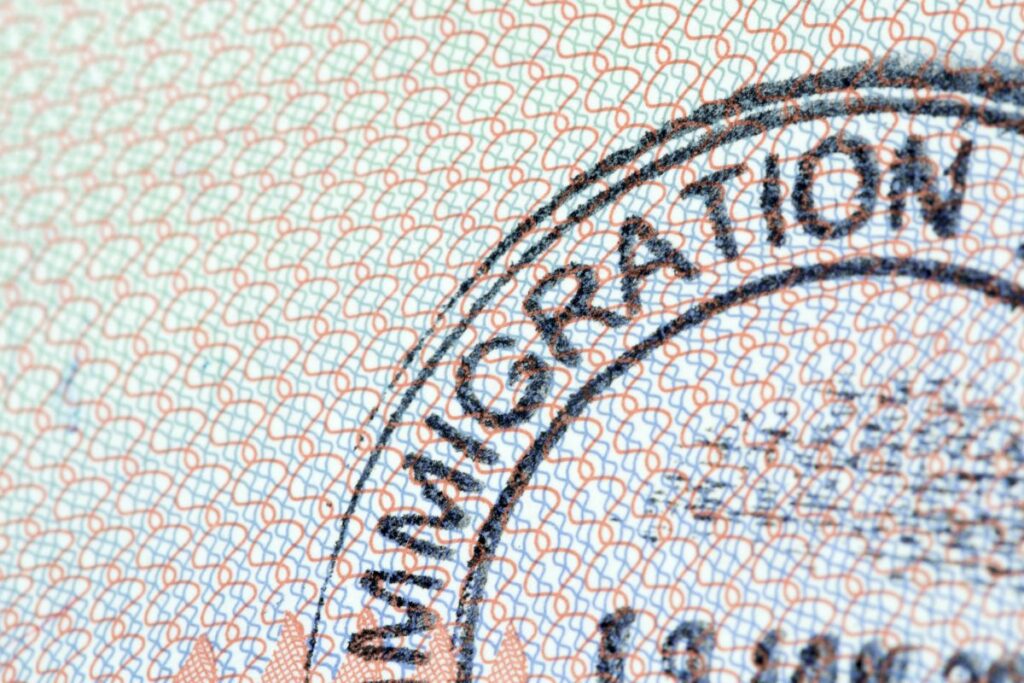Are you new to Norway? Maybe you’re an expat settling down for a new job? A student gearing up for a semester in the land of the Northern Lights? Or perhaps a long-term tourist planning to delve deep into the culture and beauty of Norway? Whichever you might be, this guide is designed with you in mind.
Norway, a country known for its stunning fjords, vibrant city life, and warm, welcoming people, might seem a bit overwhelming at first, especially if you’re not familiar with the language. But fear not, for you have already taken the first step by reading this guide!
Moving to a new country is much like starting a new chapter in a book. It’s a mix of anticipation, thrill, and a tiny bit of anxiety about what the next page will bring. That’s perfectly normal. Just remember, every question you have, every challenge you might face, and every tiny win you’ll celebrate—we’re here for it all.
The purpose of this article is to provide you with an easy-to-navigate resource, to help you understand and blend into the Norwegian lifestyle. From understanding the basics about Norway, navigating visa procedures, finding your new home, to explaining the healthcare and education systems, we’ve got you covered.
Key Takeaways
- Moving to Norway can be an exciting adventure, with its breathtaking landscapes, rich culture, and high standard of living.
- It’s important to understand the immigration process, with different rules for EU/EEA and non-EU/EEA citizens.
- Familiarize yourself with Norwegian lifestyle, including the housing market, healthcare system, education, and taxation.
- Norwegians have a strong love for nature and outdoor activities, which plays a key role in their lifestyle.
- Learning Norwegian and embracing the local culture will greatly enhance your experience.
- Norway has an efficient transport system, with options ranging from public transport to driving or cycling.
- Sampling traditional Norwegian cuisine offers a unique perspective into the country’s cultural heritage.
Basic Information about Norway
Welcome to Norway, the land of the Midnight Sun and the awe-inspiring Northern Lights! As you step into this remarkable country, you are about to immerse yourself in a place that beautifully blends the rustic charm of nature with the progressive rhythm of city life. But before we delve into the details, let’s get you acquainted with some basic information about your new home.
Located in the northern part of Europe, Norway is known for its breathtaking fjords, stunning mountain ranges, and charming coastal towns. The country’s population, as welcoming as they are, is just over 5 million people. Norway’s major cities include Oslo, the bustling capital; Bergen, known for its historic wharf and surrounding mountains; and Trondheim, a city that beautifully marries tradition and technology.
Norwegian culture is deeply rooted in nature and outdoor activities, and you will soon notice the locals’ fondness for ‘friluftsliv’ (outdoor life). No matter the season, Norwegians love to spend their time hiking, skiing, or simply enjoying a picnic by a fjord.
As for the language, Norwegian may sound like a beautiful melody to your ears, but it can also feel daunting to learn. The good news is that most Norwegians speak English exceptionally well, so communication shouldn’t be a problem while you’re getting the hang of ‘tusen takk’ (thousand thanks) and ‘god morgen’ (good morning).
However, learning a bit of Norwegian can be a fun adventure, and it’s also a sure way to impress your new friends. It may seem challenging at first, but remember, each new word is a step closer to feeling more at home.
Don’t worry, we will be exploring language learning options later in this guide. But for now, sit back, relax, and get ready to embrace the Norwegian way of life. There’s so much more to discover!
Visa and Immigration Procedures

First things first, let’s talk about one of the most important steps in your journey to Norway: visas and immigration procedures. It might seem a bit overwhelming at first, like trying to understand the rules of a new board game, but once you get the hang of it, you’ll be all set.
Depending on your plans and the duration of your stay, different types of visas are available. Are you here to study? There’s a visa for that. Coming for work? There’s a specific one for you too. Just planning to soak in all the beauty Norway has to offer for an extended period? There’s a long-term tourist visa designed just for your needs.
The first step is to check with the Norwegian Directorate of Immigration (UDI) to find out exactly which visa type applies to you. Their website is quite user-friendly and available in English, making the process easier.
Then comes the application part. It’s essential to provide accurate information and ensure all your documents are up to date. Think of it as packing your suitcase for a holiday—you need to double-check you have everything you need. If you’re uncertain about something, don’t hesitate to contact UDI for clarification. They’re there to help.
Once your visa application is approved (hooray!), there are a few more steps before you arrive in Norway. Depending on your nationality and the length of your stay, you may have to visit a Norwegian embassy or consulate for an interview or biometrics.
Remember, following all immigration laws and regulations is crucial, not just for the visa application process but also throughout your stay in Norway. It’s a lot like following the rules of the road when driving—it keeps everything running smoothly and ensures everyone’s safety.
Finding Accommodation

Now that we’ve sorted out the paperwork, let’s start picturing your life in Norway. And what could be more exciting than finding your new home? Whether you’re seeking a cozy student apartment, a comfortable family house, or a modern city flat with a view of the fjord, Norway has an array of options for you.
But, where do you start? Well, think of it as going on a treasure hunt. There are multiple paths you can take, and several places to look. For starters, websites such as Finn.no, Hybel.no, and Sio.no (for students in Oslo) are popular among Norwegians for listing rental properties. They’re easy to navigate and have English language options, making your search smoother.
When considering locations, bear in mind that rental prices can vary significantly from one city to another and from city centers to outskirts. For example, living in central Oslo might be more expensive than in other areas, but don’t worry, there’s a place for every budget.
Understanding rental contracts in Norway can feel like learning the rules of a new card game, but it becomes a breeze once you know the basics. Most contracts will include the duration of the lease, the rent amount, what’s included in the rent (like utilities or internet), and the rules for terminating the contract. Make sure you read the contract carefully and don’t hesitate to ask for clarifications.
We know that this can feel a little bit like assembling a complex piece of furniture – it might seem daunting initially, but once you get started, it begins to make sense, and before you know it, you’re all done!
First, let’s talk about the Norwegian currency: the Norwegian krone (NOK). As you begin to navigate your financial journey, getting familiar with the currency, conversion rates, and everyday costs will be very helpful.
A major step you’ll need to take when moving to Norway is opening a bank account. This can be likened to securing a reliable travel backpack—it will be essential for your journey. Most banks will require a Norwegian ID number, proof of address, and your passport. Each bank has its own procedures, so it’s a good idea to research and choose a bank that suits your needs.
The cost of living in Norway can be higher than in other countries, but remember, it often equates to high living standards. Imagine getting a VIP ticket to an exclusive event—that’s the kind of quality Norway offers. To manage your budget effectively, it’s helpful to be aware of everyday costs like food, transportation, and leisure activities.
One thing that often puzzles newcomers is the tax system. In Norway, taxes are typically deducted from your salary before you receive it, so you won’t have to do much calculating. It’s like ordering a meal and getting it ready to eat—no cooking required. If you’re employed, your employer will typically handle this. If you’re self-employed or run your own business, you’ll need to arrange this yourself, but there are plenty of resources to help.
Related: Learn more about the types of loans you’ll find in Norway
Understanding Norwegian Healthcare

Now, you might think of healthcare as a complex labyrinth, but with the right guide (that’s us!), you’ll navigate through it with ease and confidence.
Firstly, let us reassure you that Norway has one of the best healthcare systems in the world. It’s a bit like having a state-of-the-art navigation system on a challenging hiking trail—you’re in safe hands.
Once you become a resident in Norway, you’ll be automatically included in the National Insurance Scheme. This ensures that you have access to necessary healthcare services, regardless of your personal finances. Picture it as having a very reliable umbrella—it’s there to protect you when you need it.
There are two types of health insurance coverage in Norway: private and public. The public healthcare system is the one most commonly used. It covers a wide range of services including general practitioners (GP), specialists, mental health services, and hospitals.
When you register with the National Insurance Scheme, you’ll be assigned a regular GP (fastlege). Think of your GP as your healthcare tour guide—there to help you navigate through any health concerns you might have. If you need to see a specialist, your GP will refer you to one.
The private health insurance is more like a fast pass at an amusement park—it might get you quicker access to certain services, but it’s not necessary for everyone. It’s an additional cost and more commonly used for certain types of elective surgery or to bypass waiting times.
Pharmacies in Norway, known as ‘apotek’, are well-stocked and easy to locate. Over-the-counter medications are available for common ailments, and for specific prescriptions, your GP will provide you with a ‘resept’ (prescription).
Getting to Know the Education System
If you’re moving to Norway with children, or you’re here to study, understanding the education system is essential. At first, it might feel like trying to comprehend a new dance routine, but soon enough, you’ll be moving in perfect rhythm.
Norwegian education, known for its high quality, is divided into primary, lower secondary, upper secondary, and tertiary levels. One of the best parts? Education is free at all levels in public institutions. Imagine having a golden ticket to a vast library of knowledge—that’s the kind of access you get here!
Starting at age six, children go to primary school (‘grunnskole’) for seven years. This is followed by lower secondary school, which lasts for three years. The secondary education in Norway is comprehensive, ensuring that every student gets a well-rounded knowledge base.
After lower secondary school, students can choose between general studies or vocational subjects in upper secondary school. Consider this as a crossroad where students can decide their path according to their interests and future career plans.

Higher education in Norway is renowned for its variety of programs and international student-friendly policies. Norwegian universities and colleges offer a wide range of programs taught in English, especially at the postgraduate level. So if you’re here to study, you’re indeed in for a treat! Learn more about student loans in Norway (Studielån) here.
For families with younger children, childcare options include kindergartens (‘barnehage’), which are similar to preschools and daycares in other countries. These facilities provide a fun and supportive environment for children to learn and grow.
Embracing the Norwegian Language and Culture
And now, to the heart and soul of your new home—the Norwegian language and culture. Think of it as learning to cook a new dish. At first, the ingredients may seem unfamiliar, and the process a little challenging. But as you start combining them, the result is an exciting and rewarding experience.
First, let’s talk about the Norwegian language, which comes in two official forms: Bokmål and Nynorsk. Although English is widely spoken, learning Norwegian will not only help you in day-to-day activities but also immerse you more deeply into the local culture. Just like tasting the local cuisine gives you a feel for the place, speaking the local language can make your experience even richer.
There are plenty of resources available for learning Norwegian, ranging from language schools to online platforms and local community programs. And who knows? Your first ‘god dag’ (good day) to a neighbor could be the start of a lifelong friendship.
Now, onto Norwegian culture. If we had to sum it up in one phrase, it would be ‘love for nature.’ Norwegians have a profound respect for the outdoors, be it through taking weekend cabin trips, going on long hikes, or skiing. Embracing this love for nature is a beautiful way to feel more at home in Norway.
The Norwegian concept of ‘koselig‘ (coziness) is another cultural treasure. Think of it as a warm hug on a cold day. Whether it’s gathering around a fire with friends, enjoying a hot drink in a cozy cafe, or simply lighting some candles for a quiet evening at home, ‘koselig’ is all about warmth, relaxation, and the joy of simple pleasures.
Festivals and public holidays also offer a fantastic window into Norwegian culture. From the celebration of May 17th (Norwegian Constitution Day), marked by parades and festivities, to the St. Lucia Day in December, where children light up the dark winter with beautiful processions, these occasions are great opportunities to participate and feel a part of the community.
Transport and Getting Around

Norway boasts a well-developed and efficient transport system. Whether it’s trains, buses, trams, ferries, or even bicycles, getting around is generally straightforward. Much like an all-you-can-eat buffet, you have a lot of options, and you can pick what suits you best!
If you’re in one of the larger cities like Oslo, Bergen, or Trondheim, public transport is often the most convenient way to travel. City buses, trams, and in some cases, underground trains (‘T-bane’ in Oslo), cover extensive networks. You can use the Ruter app for Oslo and Viken, Skyss app for Bergen, and AtB app for Trondheim for tickets and schedules.
Now, for those stunning countryside views and fjord trips that Norway is renowned for, the national rail network is your best friend. Operated by Vy, the train services are known for their comfort and punctuality. Booking in advance can often land you some good deals.
For the explorers who prefer taking the wheel, renting or buying a car might be the way to go. Do remember, though, that Norway has many toll roads, and the driving conditions can be challenging during winter. But worry not. With the right preparations, you’ll be ready for a smooth ride!
And last but not least, let’s not forget the humble bicycle. Many Norwegian cities are incredibly bike-friendly, with extensive cycling paths and bike-sharing schemes.
Navigating a new transport system might feel like trying to play a new instrument at first, but you’ll soon get the hang of it and be playing a tuneful melody.
Enjoying Norwegian Cuisine

Tasting the local cuisine is like unlocking a sensory treasure chest—each dish offering a unique blend of flavors that mirror Norway’s culture and lifestyle. So, ready to dive in?
Norwegian food is heavily influenced by its landscape. From the fresh seafood caught in the North Sea to the game and berries harvested from the forests, it’s a celebration of its natural bounty. It’s like going on a delicious hike, where every dish tells a story of its origin.
Start with a typical Norwegian breakfast, which often includes ‘brunost’ – a unique brown cheese with a sweet, caramel-like taste. It’s often served on ‘brød’ or ‘lefse’, types of Norwegian bread. Imagine starting your day with a symphony of flavors—what a treat!
If you’re a seafood lover, you’re in for a joyride. Traditional dishes like ‘rakfisk’ (fermented trout), ‘lutefisk’ (dried fish), and ‘klippfisk’ (dried and salted cod) are must-tries. And let’s not forget the king of Norwegian seafood—salmon, which is enjoyed in many ways, from smoked to raw in sushi.
To warm you up during the colder months, hearty stews like ‘fårikål’ (mutton and cabbage) and ‘lapskaus’ (meat and vegetable stew) are widely loved. Think of it as a warm, comforting hug on a chilly day.
For dessert, indulge in a ‘kanelbolle’ (cinnamon roll), ‘krumkake’ (curled cake), or ‘multekrem’ (cloudberries with cream). They are the perfect sweet ending to your meal, like a delightful encore at the end of a concert.
Remember, exploring a new cuisine is like learning a new dance. The first few steps might feel unfamiliar, but soon, you’ll find your rhythm and enjoy every move. So, bring out your cutlery and get ready to tango with Norwegian cuisine. We promise, it’s a dance you’ll enjoy!
Additional Resources
- General Information: Websites like NAV and VisitNorway
- Weather Updates: Meteorologisk Institutt
- Learning Norwegian: Duolingo, Memrise, Lingu, and Folkeuniversitet
- Local Support Groups: Expat and foreigner support groups on social media like: Norway Expats and Job opportunities in norway for foreigners
- Emergency Contacts: Medical assistance (113), Fire (110), Police (112), and for non-emergencies, the local police (02800)


